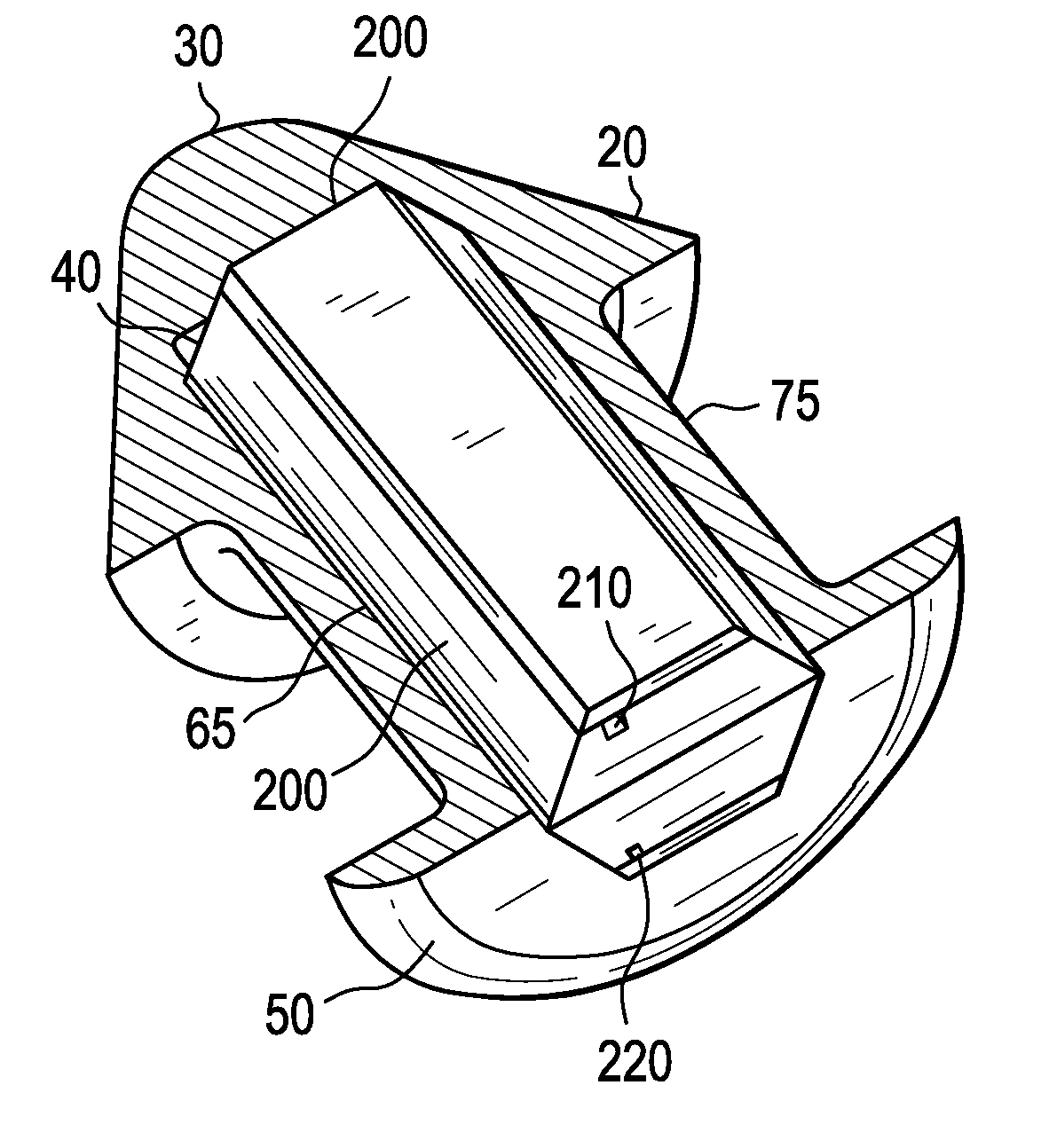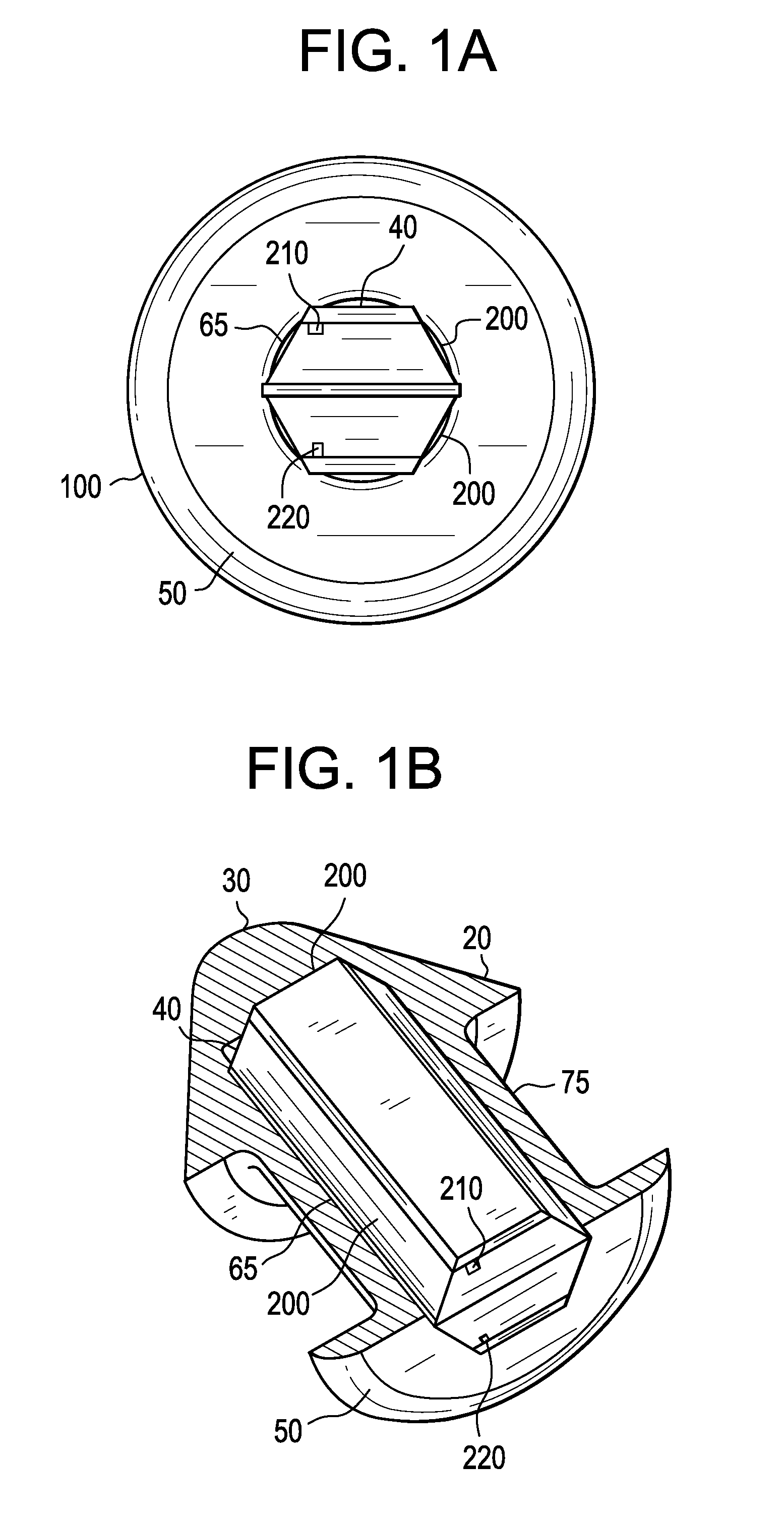Punctal plugs for controlled release of therapeutic agents
a technology of therapeutic agents and plugs, applied in the field of punctures, can solve the problems of ineffectiveness, substantial drop, ineffectiveness of infection, etc., and achieve the effect of simple and inexpensive manufacturing
- Summary
- Abstract
- Description
- Claims
- Application Information
AI Technical Summary
Benefits of technology
Problems solved by technology
Method used
Image
Examples
Embodiment Construction
[0025]Punctal plugs have been in use for decades now to treat conditions of dry eye. More recently they have gained attention for use as drug delivery systems for the treatment of ocular diseases and conditions. Several challenges exist with formulating a drug to release at the desired daily rate and or dose that will give efficacy while limiting adverse events.
[0026]Diffusion based drug delivery systems are characterized by release rate of drug and is dependent on its diffusion through inert water insoluble membrane barrier. There are at least two types of diffusion designs, exemplary of those are reservoir devices and matrix devices. Reservoir devices are those in which a core of drug is surrounded by a polymeric membrane. The nature of the membrane determines the rate of release of drug from the system. The process of diffusion is generally described by a series of equations governed by Fick's first law of diffusion. A matrix device consists of drug dispersed homogenously through...
PUM
 Login to View More
Login to View More Abstract
Description
Claims
Application Information
 Login to View More
Login to View More - R&D
- Intellectual Property
- Life Sciences
- Materials
- Tech Scout
- Unparalleled Data Quality
- Higher Quality Content
- 60% Fewer Hallucinations
Browse by: Latest US Patents, China's latest patents, Technical Efficacy Thesaurus, Application Domain, Technology Topic, Popular Technical Reports.
© 2025 PatSnap. All rights reserved.Legal|Privacy policy|Modern Slavery Act Transparency Statement|Sitemap|About US| Contact US: help@patsnap.com



